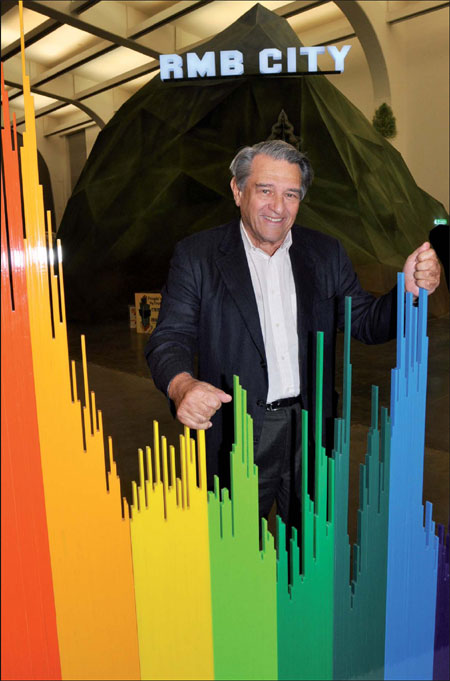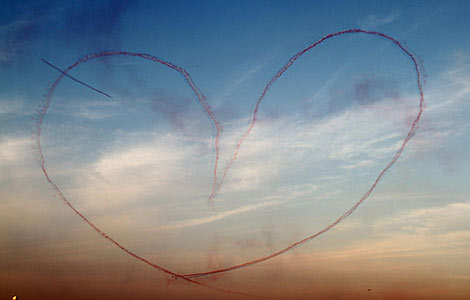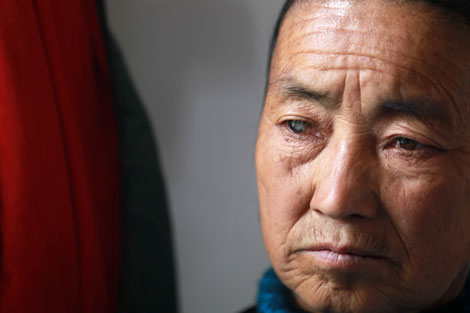For art sake
Updated: 2011-11-18 11:52
By Mark Graham (China Daily European Weekly)
|
|||||||||
|
 Guy Ullens first discovered Chinese contemporary art when he was conducting business deals in Beijing in the 1980s. [Mark Graham / for China Daily] |
Contemporary artists have a wealthy Belgian benefactor
During regular visits to Beijing, billionaire businessman Guy Ullens became intrigued by contemporary Chinese art, a fascination that developed into a passion and, ultimately, led to the founding of the personally-funded Ullens Center for Contemporary Art in Beijing. The Belgian benefactor knows many of the big-name artists personally, having struck up friendships - and bought their work - when he was on business trips to the capital city during the 1980s, long before the world woke up to the wealth of new talent emerging in China.
"I spent my weekends, with the art people," he recalls. "It just happened by sheer accident that the place to relax was the art community; they were not overloaded by work and had plenty of free time and I started to spend time with them.
"It was unique, it was a fun time, they were soaking up information like sponges they wanted to know what was happening in the rest of the world. They were called embassy artists because the only people they would see was the cultural attach and they would sell 15 paintings a year. They were the first to have cars, Japanese cars.
"At first, I started to buy the art as a hobby I would not fall dead from the prices, so I would buy 15 or 20 at a time. The next step was to promote the artists. Foreign museums would write to me and ask to lend pieces and I said yes, naturally. We then started to promote them in Europe and CCTV did a prime-time program about the enthusiasm for Chinese art. It grew from there."
That growth was dizzying during the earlier part of this decade, when price records for contemporary Chinese art seemed to fall almost monthly. While that was happening, Ullens was at work on a scheme of his own, securing the necessary permits for a large-scale Beijing gallery dedicated to showing the most thought-provoking examples of contemporary Chinese art.
After a long series of negotiations, Ullens secured space in part of a disused suburban East German-built factory, an imposing brick structure designed in the Bauhaus style of architecture.
The 798 factory complex, as it is known, already housed a rag-tag collection of artists and small galleries; the debut of the Ullens Centre for Contemporary Art (UCCA) four years ago put the location firmly on the map for locals and visitors.
A rite of tourist passage for anyone vaguely interested in art is to visit UCCA and then spend time wandering around the scores of smaller galleries and coffee shops.
"Some say that is gentrified but do you want to go to a place that is dilapidated?" asks Ullens rhetorically.
"Some people didn't come here originally because they thought it was too crummy but I think it is still very bohemian. I don't think you have this in any other Western cities.
"Personally, I have a nice relationship with the Chinese artists - they are a pretty unruly crop! They say, 'why don't you do this, why don't you do that' all the time. The fun is to see the young generation come up, you see a crowd of young Chinese to me that is the big satisfaction."
Ullens personally bankrolls the operation, stumping up sponsorship for the artists to embark on wild flights of fantasy without worrying about the cost.
A recent show had a waterfall gushing noxiously smelly black ink, giant plastic bubbles filled with butterflies, a video installation housed in a makeshift building named RMB City and a darkened room showing a series of black-and-white movies beamed on screens from old-style projectors.
Just how much it cost to found, and fund, the UCCA is a question Ullens politely declines to answer but, apart from one-off exhibition funding by fashion brands such as Dior, ticket sales from the modest entrance fee and income from T-shirts, posters and plates and the popular restaurant, every last yuan comes from the deep pockets of the founder.
It has allowed the recruitment of top professionals, such as Paris-born director Jerome Sans, an expert on China contemporary art and sometime rock musician.
Visitors familiar with art-world landmarks like the Tate Modern in London, another building with a former industrial heritage, are invariably impressed, amazed even, to find such a slickly run operation in China.
Ullens can easily afford the costs, having made his fortune from leveraged buy-outs, but is keen for the showcase project - the most important contemporary art facility in the country - to eventually be funded locally, with help from corporate sponsorship.
"We need to expand," he says. "In the West then major industrial constructions such as 798 are being used for galleries.
"The Tate Modern in London, for example, is one of the most stunning in the world. They are putting a huge new addition and using the old fuel tanks.
"In many ways, that was a template for the UCCA. I am trying to send this message that you have more of these kinds of buildings around it, and keep them all together, it could be a new concept. We need two shows simultaneously. There is no space for a permanent collection. At first we were going to have a museum and then we thought no it would be too boring."
Septuagenerian Ullens, who is semi-retired and spends spells of the year on his custom-built luxury yacht, Red Dragon, makes several annual visits to Beijing, with wife Mimi, to check on his pet project.
The tycoon's family connections with China go back to the early part of the last century, a time when expatriates generally had a reputation for taking art out of the country, not encouraging its development.
His father was posted to China as a junior Belgian embassy attach, arriving fresh from military service in World War I.
"As a child I heard a lot about his love of China, he was very much impressed by the Beijing environment," Ullens says. "He was a boy diplomat, aged 21 and just out of the trenches. He ran errands around China for the embassy - the Belgians were very active in railways and tramways. He met a lot of simple Chinese: when he was going to look at a major bridge construction he had to go and live with the crew, he loved that."
Ullens senior could little have imagined that his son would become a major art-world player in the dynamic new 21st-century China, building a collection of 1,000 key works.
His contribution to the development of new art - and provision of a classy facility to display it - is indisputable; the question now is how the UCCA will fare when the benefactor is no longer personally involved.
Adds Ullens: "This place has to be run by Chinese in the long run and we should fade out. Who will take the risk? It is very common in the rest of the world. What we are trying to demonstrate to China is that you can have places like this ..."











